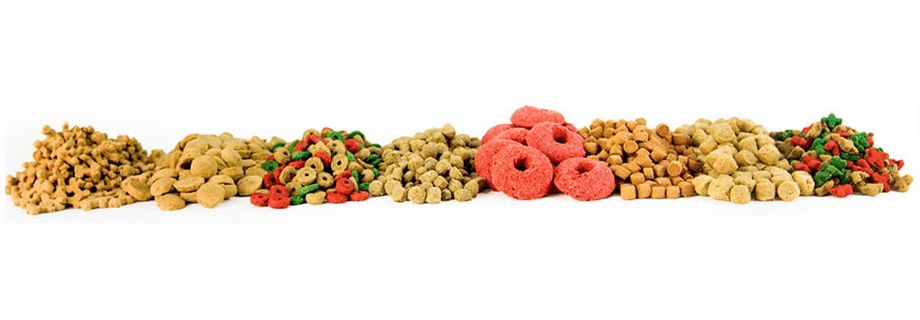Utility of Dry Extruded Shapes

When you think of shaped feeds, typically, pelleted diets, pet foods, and fish feeds come to mind. These are complete diets that provide all nutrients in a convenient form for a particular stage of animal development. With pelleted feeds, the main advantage is that feed efficiency is often improved – provided that high-quality ingredients, like dry extruded soy meals, are used to make the pellets. Pellet mills don’t do any cooking to speak of.
That is why we’ve promoted in our blogs and elsewhere, our medium shear extruder (MS3000) as the right tool for both cooking and shaping feeds and pet foods. In addition to conveniently providing all nutrients for optimal performance, this introduces another dimension – the shape of the product – which goes beyond the particle size of meals or flours. Particle size is important because it can affect digestibility and availability of nutrients in any ingredient or diet, but it’s somewhat of an old issue. The shape of a feed or ingredient, and how this affects nutrient delivery, is an important new factor worth exploring.
This is particularly important for ruminants, like dairy cattle, that can consume a wide range of shapes and sizes. Indeed, forage particle length is an important characteristic of silages and hay, and it can vary widely if not properly controlled. Everything consumed by a ruminant spends at least some time in the rumen, a microbial fermentation vat. How might dry extruded, shaped ingredients work in the rumen?
We’ve been promoting our new high shear, dry extruder 2000-CG, which is designed to extrude high-starch ingredients, among others. Recently, we were able to attach dies and a cutterhead to the end of the barrel, and make round “disk” shapes through work in the Hanson & Said R&D Center. Combined with the highly-gelatinized and rumen-fermentable nature of starch in our dry extruded corn, the shape adds yet another level of control, while increasing the bulk density. “Disks” of extruded corn should spend more time in the rumen and allow even more rumen microbial protein to be made from the starch – an important way to boost dairy production.
And, what else could you deliver to the animal this way? What other beneficial nutrients could you extrude into the corn as it’s being cooked and shaped? Only time and R&D will tell.
Speak with us about developing your own innovative, shaped product for the feed industry.



